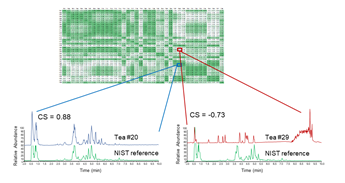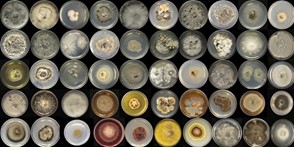

Written by: Alexis Brown
Dr. Nadja B. Cech is a Patricia A. Sullivan Distinguished Professor of Chemistry at UNC Greensboro, where she has been on the faculty since 2001. She received her BS degree in chemistry from Southern Oregon University, and her PhD in chemistry from the University of New Mexico. Dr. Cech is a Principal Investigator for the Center for High Content Functional Annotation of Natural Products, Co-Director of the Analytical Core for the Center of Excellence for Natural Product Drug Interaction, and Co-Director of the Medicinal Chemistry Collaborative. Dr. Cech’s research is funded by the National Institutes of Health. She is the recipient of the 2011 Jack L. Beal Award for Best Paper in the Journal of Natural Products by a Young Investigator and the 2017 Thomas Norwood Award for Undergraduate Research Mentorship. Dr. Cech is fortunate to lead a dynamic group of eighteen students and postdoctoral research scientists. Together with collaborators around the world, the Cech group seeks to discover new ways to treat drug resistant bacterial infections. Natural sources such as plants, fungi and bacteria serve as inspiration for these potential new treatments. It is perhaps not surprising, then, that Dr. Cech has always been fascinated by nature. She grew up in rural Oregon, exploring the natural world while living in a tent, a cabin, and for several years a 300 square foot yurt. These days Dr. Cech is an avid gardener, a creative cook, and a mother of two. She is most in her element when writing and telling stories or outside with the sun in her eyes and her hands in the soil.
Current Projects in the Cech Laboratory

- Creating New Tools for Natural Products Drug Discovery
In the early 1970s, scientist Tu Youyou and her team discovered artemisinin, now the world’s most effective treatment for malaria. This molecule came from sweet annie (Artemisia annua), a plant used in Traditional Chinese Medicine to treat fevers. To facilitate future discoveries like these, the Center for High Content of Functional Annotation of Natural Products (HiFAN) seeks to develop new tools that will help researchers to identify which molecules produced by a given plant (botanical) may be effective against disease. The Cech group leads one of the projects for this center, heading up efforts to improve the interpretation of large datasets acquired using mass spectrometry.

- Predicting and Preventing Adverse Interactions between Drugs and Dietary Supplements
Our goal with this project is to help support safe use of these dietary supplements (such as herbal medicines), by determining whether they might interact with pharmaceutical drugs consumed at the same time. This research is conducted by a multi-university collaborative group called the Center of Excellence for Natural Product Drug Interaction. The Cech group’s role in this project is identifying which dietary supplements should be given to the subjects who participate in clinical studies. It’s a complicated task because dietary supplements are very complex and differ in composition from one sample to the next.

- Developing New Treatments for Drug Resistant Bacterial Infection
According to the Centers for Disease Control, antibiotic-resistant bacterial infections are responsible for 2.8 million infections and 35,000 deaths each year in the US alone. Penicillin, the antibiotic that launched the antibiotic revolution, is just one great example. The Cech Laboratory collaborates with Dr. Nicholas Oberlies in research that seeks to identify new molecules that might be the world’s next penicillin. This research is conducted by relying on a library of thousands on living fungi, preserved in suspended animation at the University of North Carolina Greensboro. Scientists in the Cech and Oberlies laboratories grow these fungi, study the molecules that they produce, and test their ability to kill various bacterial pathogens.

- Understanding Bacterial Communication in the Skin Microbiome
When we talk about bacteria, there’s a lot of focus on the “bad” bacteria (pathogens) that cause infections. However, bacteria can also be helpful! The human skin is coated with bacteria (called commensals). The Cech group was recently funded by the National Institute of Allergy and Infectious Disease (NIAID) for a project with collaborators Alexander Horswill and Richard Gallo to understand how healthy bacteria communicate with each other and with invading pathogens. Understanding this communication is an important aspect of developing new ways to prevent and treat infections.
Selected Publications from the Cech Laboratory
https://www.ncbi.nlm.nih.gov/pmc/articles/PMC7106486/
https://www.ncbi.nlm.nih.gov/pmc/articles/PMC5897044/
https://www.ncbi.nlm.nih.gov/pmc/articles/PMC6948848/
https://www.ncbi.nlm.nih.gov/pmc/articles/PMC6658353/
https://www.ncbi.nlm.nih.gov/pmc/articles/PMC7224364/
https://www.ncbi.nlm.nih.gov/pmc/articles/PMC5527603/ https://pubmed.ncbi.nlm.nih.gov/33666420/ https://www.ncbi.nlm.nih.gov/pmc/articles/PMC6325740/